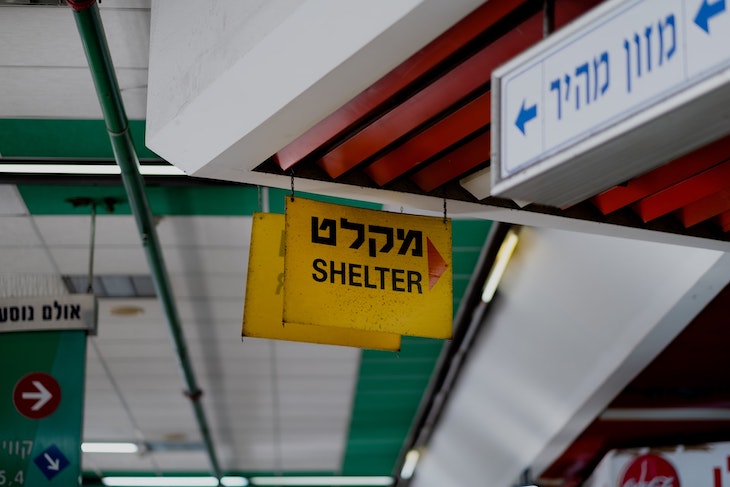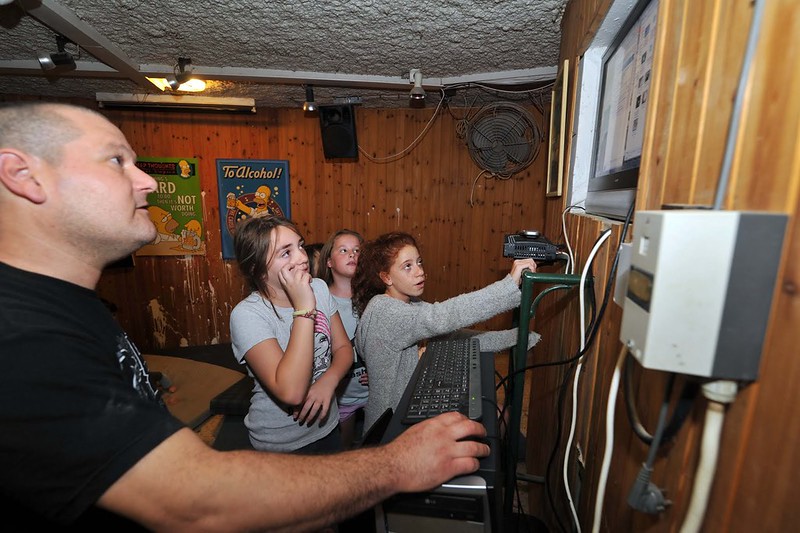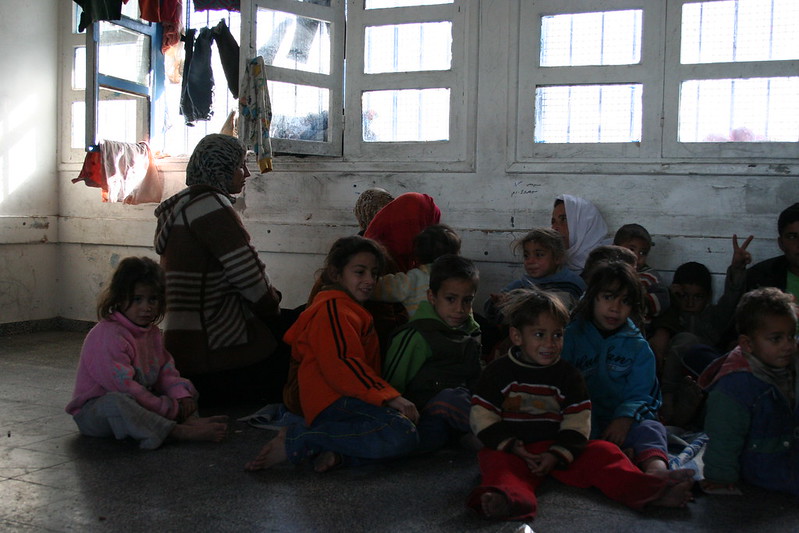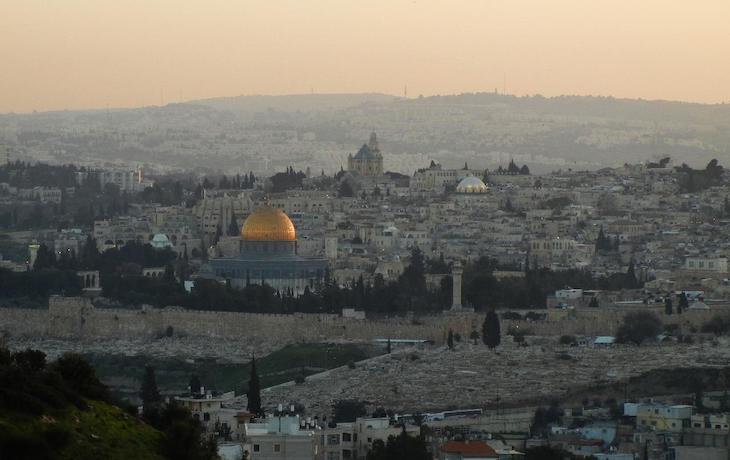When violence between Israel and Palestine once again broke out earlier this year, readers grew curious about how the people in that region prepare for indiscriminate missile attacks. How is the average person on the ground expected to respond when confronted with an unwelcome fireworks show?
Israel has its own unique infrastructure for dealing with missile attacks that isn’t readily adaptable to most other people, including some advanced defense systems. You might have seen videos of their impressive Iron Dome missile defense system during this year’s conflict.
Under Israeli law, all homes must be equipped with protective shelters, and the small country has more than one million of them. How are they constructed? How do they look? What is life like in these shelters?
The Israeli-Palestinian conflict is a sensitive situation and I don’t pretend to fully grasp it. But regardless of the politics and humanitarian issues, it’s worthwhile to understand how people go about their daily lives under the threat of random missiles that are lobbed into residential areas.
Summary:
- Israel has a number of different shelters, most notably the mamad, which is a reinforced room in a home.
- There are strict specifications for a mamad, but they’re not always strictly followed.
- The mamad often doubles as a bedroom, study, or other room in a home.
- Every home built since 1993 is required to have a mamad.
- There are government programs to renovate buildings before 1980, but many built between 1980 and 1992 are unprotected.
- Many Israeli shelters have serious defects.
- Building a mamad isn’t cheap and there are many regulatory hurdles. However, there are less expensive options for older homes.
- Palestinians in Gaza have little in the way of shelter, and many go to UN schools when fighting starts.
Mamad, mamak, and maman
Until the First Gulf War, Israel largely depended on bomb shelters for protection. But the threat of chemical weapon attacks and the need for faster response times sparked a shift to residential protected spaces, called merhav mugan dirati, usually shortened to mamad.

There are a lot of Hebrew terms for shelter, and they can be confusing to the uninitiated. A miklat specifies a bomb shelter. A miklat tsiburi is a public shelter. A mamad implies a protected room in a home or apartment, and every apartment built after 1993 is required to have one.
In apartments where there aren’t individual mamads, the building might have a mamak on each floor as a sort of shared mamad. Places like schools and offices may have a maman, which is an institutional protected space.
The specifications for a mamad are strict. They must have:
- Reinforced concrete walls.
- A heavy, airtight iron door that opens outward.
- A concrete wall that protects the door when opened.
- An iron-covered window that either slides in or opens outward. The window must be no more than 1.21 square meters. The window is in case the occupants must escape.
- At least 9 square meters of floor space, though some 5-square-meter rooms are allowed.
- At least three electrical sockets, one phone socket, and one TV/radio socket.
- As of 2010, they must also have a ventilation system.
Mamads are often stacked on top of each other across floors in apartment buildings, forming a sturdy core of protection.
However, not everyone builds safe rooms like they’re supposed to. Just like not every American contractor always builds according to code. One survey conducted by Hadas Building Inspection found that 75% of home shelters had serious defects, as did 70% of bomb shelters.
Living with a mamad
Like pretty much everyone, most Israelis can’t afford to dedicate an entire room to a shelter, so the rooms usually serve a double purpose as a bedroom, study, playroom, or storeroom. They’re not supposed to have shelves, light fixtures, or plumbing, but many Israelis ignore that. Israeli apartments aren’t magically larger than apartments elsewhere in the world, and they have to make the most out of their space.
Iron doors are a pain, so many also put wooden doors over the iron door and leave the iron door open until it’s needed. Some contractors even recommend that their clients put the iron doors in storage, but that’s not an easy thing to drag out in an emergency.
The Guardian published photos of many Israeli shelters to show what they look like. Some look like the proverbial bomb shelter, while others serve as living spaces, home gyms, and even dance studios.

Here’s a slice of what the mamak lifestyle can be like:
When sirens began to blare, everyone was to run toward the Mamad, gather at the entrance, embrace in a group hug, and then enter the safe room. Her pre-teen daughter joined with other youngsters in the neighborhood to transform the dreary bunker-like Miklat into a game room where they brought their computers and art supplies, staged skits and showed videos. In their homes and secure spaces, people worked to maintain or create routines in situations when it was hard to do so. When Dafna asked Roy what he remembered from Operation Pillar of Defense, his immediate reaction was: “For me it meant there is a change in everything that has to do with my routine. Both at home and at work. All this thing with the sirens, running for shelter. During the day, during the night. Turning to the internet, reading the news all the time.”
These shelters are such a common part of Israeli life that there are comedy skits based around them.
When there is no mamad to be found
Unfortunately, 60% of Israeli apartments do not have a shelter. One reason is the cost: upwards of $45,000. There is a government program, Tama 38, to subsidize home renovations, but it only applies to buildings built before 1980, leaving out those built between 1980 and 1992. Tama 38 has largely been considered a failure, and it was set to end in 2020, but has been extended to 2022.
There are other problems as well. Most contractors focus on renovating apartments in central Israel because they’re more profitable, but the most vulnerable area is the periphery near the Gaza Strip. If a homeowner wishes to add a mamad on their own, there are endless bureaucratic hurdles: those in multi-story homes must get approval from 66% of their neighbors and they must get approval from a planning committee, which is reportedly hard to do.
So Israelis have had to get creative, earning a reputation as expert home renovators.
One option for those who live in older buildings is to reinforce an existing room with 12 centimeters of concrete, reinforcing the ceiling, and adding a steel door and window. As a cheaper option, the Israeli government allows the installation of a steel cage in a room, covered with a layer of cement.
If even the cage is out of reach, Nefesh B’Nefesh, an organization that facilitates Jewish migration to Israel, recommends creating a secure inner room:
Recommendations are to choose a room that is the innermost room of the building and that has the minimum number of external walls. The room should be able to be sealed off and should have few windows and openings. In addition, there must be no large glass windows and the walls should not be covered in ceramic porcelain, tiles, mirrors or glass.
If all else fails, interior stairwells are the recommended place to go when there is no better option.
For those caught in a car or outdoors, your best bet is to get inside a building. Failing that, it’s advised to lay on the ground, put your hands over your head, and hope for the best.
Meanwhile in Gaza…
Even with all the problems Israelis have in securing shelters, things are much worse for the Palestinians in Gaza. That’s largely due to being unable to afford the billions of shekels it would take to build enough. There is also supposedly a culture of martyrdom among the Palestinians, but that’s questionable.
It would also be difficult for Hamas, which controls Gaza, to get enough concrete since Israel restricts imports due to Hamas reportedly using concrete to construct underground tunnels and weapons caches.
For many Palestinians, United Nations schools are their best bets for shelter. Not because of the concrete, which couldn’t withstand direct strikes, but rather the political implications of attacking a UN outpost. However, Israel has attacked UN facilities in the past. Complicating matters is the fact that Palestinian groups often use schools and other civilian shelters to store weapons.


You are reporting the comment """ by on